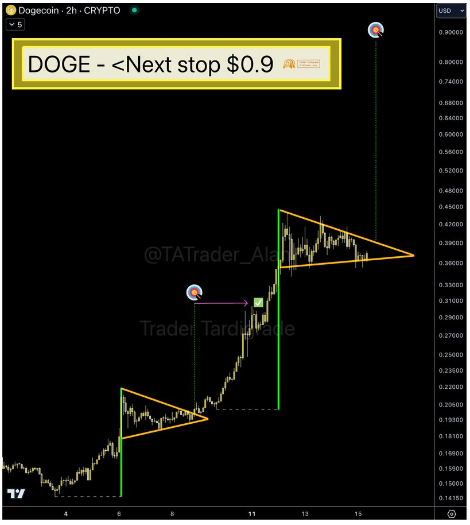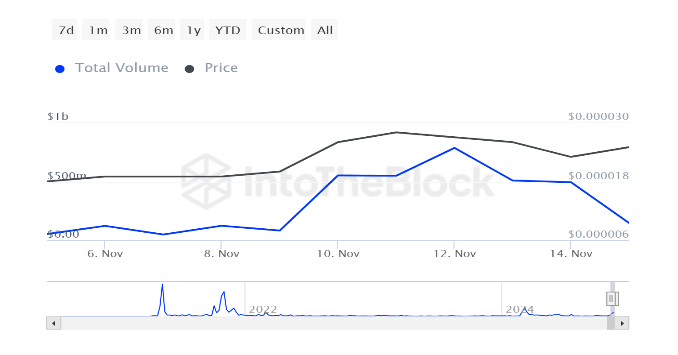The emergence of a new asset is a once-in-a-life-lifetime opportunity for investors. After the first meltdown, crypto is hot again. TradFi has big plans for it.
The unexpectedly swift approval of Ethereum ETFs by the SEC, marks a new wave of institutional adoption of digital assets. It amplified the effect on the market from the BTC rally and debut of its ETF, launched by TradFi heavyweights like Grayscale and Blackrock.
Renewed optimism is fostering increased cross-flows between institutions and the digital asset sector. BNY Mellon is expanding its digital assets team. State Street has launched new ETFs that provide exposure to digital assets, in partnership with Galaxy Digital. Franklin Templeton is considering launching a new crypto fund targeting tokens beyond Bitcoin andEthereum.
Franklin Templeton Weighs New Crypto Fund Investing in Tokens Beyond Bitcoin, Ether: Report https://t.co/I8xVuqEplm via @coindesk
— Siciliano38 (@Sicilliano38) June 22, 2024
Paradoxically, a shift in mainstream acceptance of crypto as a legitimate asset class has been propelled by institutions that were supposed to be replaced by innovations stemming from the crypto industry. If ‘don’t fix what isn’t broken’ were a case for crypto, the flood of VC would continue its flow, but it has altered significantly.
Annual VC investments fell from $14.6 billion in 2021 to $9.6 billion in 2022. It plummeted even further to $1.6 billion in 2023, an 83% drop YoY. So what are the new directions?
CeFi Re-Focusing
In Q1 2024 the crypto industry showed signs of recovery. Total VC funding surged by 40% to Q4 2023, reaching $2.4 billion. For the first time since 2022, it exceeded $1 billion for two straight months. In contrast, crypto CeFi funding does not fall in the same bucket. In total, startups attracted $232m, a 58% YoY drop to Q1 ‘23 ($553 million) and 59% less than in Q4 ‘23 ($572.21m).
Historically, VC flagship projects were indicators of market trends. Funding patterns indicate that crypto CeFi is undergoing a refocus. In Q1 2024, investors funded 13 types of projects, a sharp decline from 31 in 2023 and 54 in 2022.
In 2022 and 2023, CeFi funding diversified across multiple areas, covering widely recognized categories like social trading and extending into analytics, taxes, and accounting.
In 2024 funding was curtailed to digital asset management, exchanges, trading, liquidity, payments, and custody. Promising or hype-wheeled projects are no longer prioritized for the A-list.
In other words, the center of gravity for venture capital is shifting towards projects that integrate crypto-native financial environments with TradFi frameworks that have been shaped by the financial industry’s experiences with crashes, bubbles, and over-promises.
Who are the survivors in crypto-drought?
Clearing, Custody, and Regulatory-compliance
Securitize raised $47m in a strategic round, involving BlackRock, to further develop a regulatory-compliant platform for issuing and trading digital asset securities.
In Q1 2024, ClearToken attracted $10m in seed round. It intends to be fully regulated in the UK and has initiated the process of obtaining clearing house recognition from the Bank of England. Seed-round was co-led by FlowTraders, a crypto-trading firm with strong ties to TradFi.
Though the details of funding for FireBlocks, BitGo, HQLAX, and EDX Markets are undisclosed, among their investors are Haun Ventures, HSBC, BNP Paribas Securities, BNY Mellon, and other prominent TradFi veterans.
#Binance teams up with @Mastercard to launch a new prepaid card in Argentina, bringing crypto payments into the region ????????Users can enjoy:???? Making purchases in crypto (#BTC, #BNB & more)???? Up to 8% in crypto cashback ???? Zero fees on ATM withdrawals
— Binance (@binance) August 4, 2022
This trend is reinforced by the ongoing expansion of traditional finance players into the digital assets realm. PayPal is preparing to launch its own on-chain stablecoin, while Mastercard begins its foray into peer-to-peer crypto payments in Argentina, Brazil, Chile, France, Guatemala, Mexico, Panama, Paraguay, Portugal, Spain, Switzerland, and Uruguay.
Bridging the Trust Gap
The greenlight for crypto-related vehicles marked two strong trends, whetting institutions' appetite to embrace crypto for the long term.
Firstly, crypto-based ETFs became the fastest-growing ETF sector in history. While it generally takes 6-12 months to measure institutional demand the current trend showed definite interest from the traditional finance community.
#Bitcoin ETFs were (finally) just approved for trading tomorrow, after ten years. Maybe the politics in Congress around cryptocurrency will get better once they realize it's backstopping pension funds and retirement accounts.
— Edward Snowden (@Snowden) January 10, 2024
Secondly, and more importantly, the SEC approval of the BTC and ETH ETFs has boosted the legitimacy of digital assets, presenting a once-in-a- generation opportunity of a new asset class to investors. Some argue that FX derivatives over 20 years ago were the last innovation market witnessed in this space.
Market participants have learned a painful lesson during FTX collapse and now favor unbundled services with qualified custody to better manage counterparty risks.
The crypto market structure is quickly evolving to match traditional finance with dedicated execution, clearing, and settlement services emerging to serve the growing number of players and assets in the space. Rebundling these services through thoughtful collaboration and integrations will bring capital and operational efficiencies to the digital asset industry.
This article was written by Konstantin Shulga at www.financemagnates.com.
You can get bonuses upto $100 FREE BONUS when you:
💰 Install these recommended apps:
💲 SocialGood - 100% Crypto Back on Everyday Shopping
💲 xPortal - The DeFi For The Next Billion
💲 CryptoTab Browser - Lightweight, fast, and ready to mine!
💰 Register on these recommended exchanges:
🟡 Binance🟡 Bitfinex🟡 Bitmart🟡 Bittrex🟡 Bitget
🟡 CoinEx🟡 Crypto.com🟡 Gate.io🟡 Huobi🟡 Kucoin.


















Comments